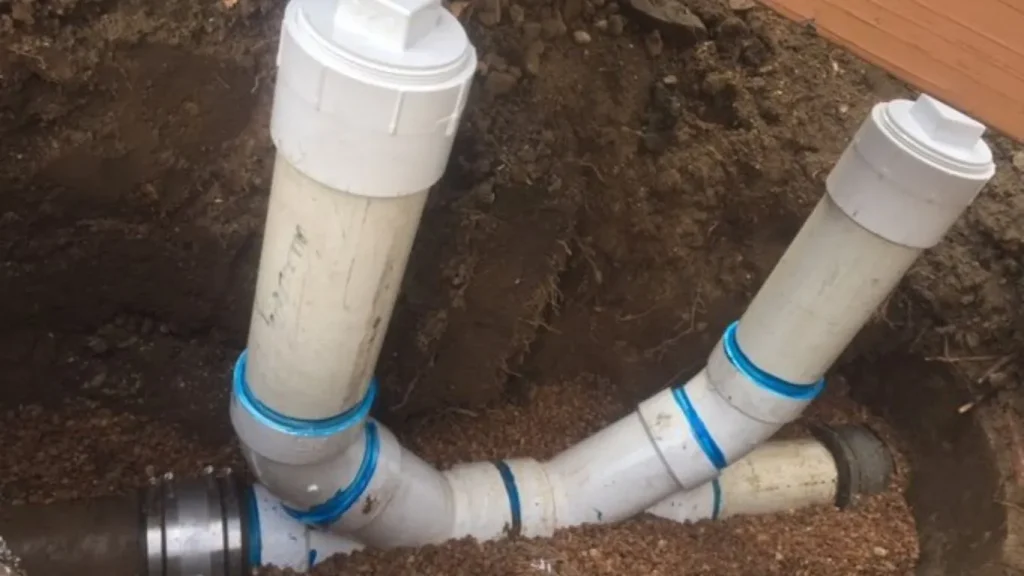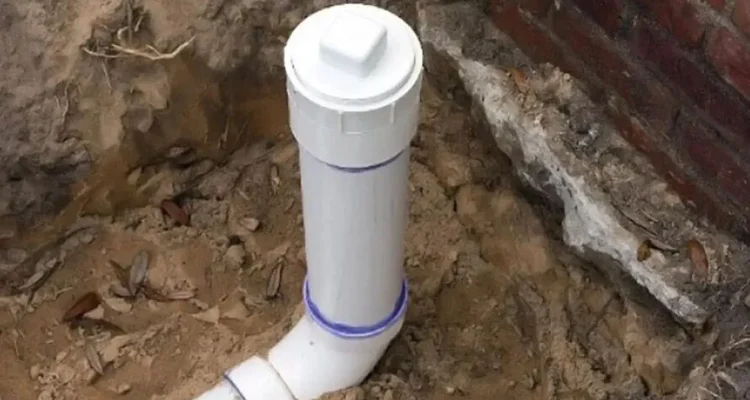Introduction
Plumbing is one of those things you never really think about until something goes wrong. And when it does, understanding the basics can save you a lot of time, money, and headaches. One of the most important components of a plumbing system is the cleanout. But what exactly is a cleanout, and why is it so crucial?

What is a Plumbing Cleanout?
A plumbing cleanout is an access point in your plumbing system that allows for easy inspection, maintenance, and removal of blockages. Think of it as a door that plumbers can open to get into the pipes without having to tear up your walls or floors. It’s an essential part of keeping your plumbing system running smoothly.
Types of Plumbing Cleanouts
Interior Cleanouts
Interior cleanouts are usually found inside the house. They are typically located in basements, crawl spaces, or near the main plumbing fixtures. These cleanouts are essential for maintaining the internal plumbing network and are often hidden behind access panels.
Exterior Cleanouts
Exterior cleanouts are located outside the house, usually near the foundation or along the sewer line. These cleanouts provide access to the main sewer line and are crucial for addressing larger blockages that could affect the entire plumbing system.
Why Are Cleanouts Important?
Cleanouts play a vital role in maintaining the health of your plumbing system. They help prevent blockages, provide easy access for routine maintenance, and can save you from costly repairs. By having readily accessible cleanouts, plumbers can quickly address issues before they become significant problems.
Where are Cleanouts Located?
Cleanouts can be found in various locations depending on the design of the plumbing system. In residential properties, they’re often located near bathrooms, kitchens, and laundry rooms. In commercial buildings, cleanouts might be situated in utility areas, basements, or outside near the main sewer lines.
How to Identify a Cleanout
Identifying a cleanout can be relatively simple if you know what to look for. They are usually capped with a threaded plug that can be unscrewed. Look for circular or square covers on walls, floors, or even in the ground outside your home. These covers often have markings such as “cleanout” or “CO.”
How to Use a Cleanout
Using a cleanout requires some basic tools and knowledge. Here’s a step-by-step guide:
- Gather Your Tools: You’ll need a pipe wrench, gloves, and possibly a drain snake.
- Locate the Cleanout: Find the cleanout access point.
- Remove the Cap: Use the pipe wrench to unscrew the cap.
- Inspect the Pipe: Check for any visible blockages.
- Insert the Drain Snake: Feed the drain snake into the pipe to clear any clogs.
- Re-secure the Cap: Once the blockage is cleared, screw the cap back on.
Safety Precautions
When working with plumbing cleanouts, it’s essential to take safety seriously. Wear protective gloves and eye protection to avoid contact with sewage and debris. Always handle blockages carefully to prevent injury or damage to the plumbing system.
Common Problems with Cleanouts
Cleanouts are not immune to issues. Common problems include blockages, corrosion, and damage to the cap or threads. Regular inspections can help identify and address these issues before they escalate.
How to Maintain Your Cleanouts
Maintaining your cleanouts involves regular inspections and cleaning. Ensure the caps are securely in place and check for signs of wear or damage. Cleaning should be done periodically to prevent buildup and ensure easy access in case of a blockage.
Professional vs. DIY Cleanout Maintenance
While DIY maintenance can be effective for minor issues, some situations require a professional plumber. If you encounter severe blockages, damaged pipes, or persistent problems, it’s best to call in an expert. Plumbers have the tools and expertise to handle complex issues safely and efficiently.
The Cost of Plumbing Cleanout Services
The cost of plumbing cleanout services can vary widely depending on the complexity of the job, location, and the plumber’s rates. On average, homeowners can expect to pay between $100 and $300 for a basic cleanout service. Factors such as the severity of the blockage and accessibility of the cleanout can affect the final cost.
Eco-Friendly Plumbing Practices
Being environmentally conscious with your plumbing maintenance can make a big difference. Avoid harsh chemical drain cleaners that can damage your pipes and the environment. Instead, use eco-friendly cleaning solutions and regular maintenance to keep your system running smoothly.
Myths About Plumbing Cleanouts
There are several myths about plumbing cleanouts that can lead to confusion. One common misconception is that cleanouts are only necessary when there’s a problem. In reality, regular maintenance and inspections can prevent issues before they arise. Another myth is that only professionals can handle cleanout maintenance; however, with the right tools and knowledge, many homeowners can manage basic tasks themselves.
FAQs
1. What is the difference between a cleanout and a drain?
A cleanout is an access point in the plumbing system used for maintenance and clearing blockages, while a drain is a pipe that carries wastewater away from fixtures.
2. How often should cleanouts be inspected?
Cleanouts should be inspected at least once a year to ensure they are free of blockages and in good condition.
3. Can I install a cleanout myself?
While it’s possible for a skilled DIYer to install a cleanout, it’s generally recommended to have a professional plumber handle the installation to ensure it’s done correctly.
4. What should I do if my cleanout is clogged?
If your cleanout is clogged, try using a drain snake to clear the blockage. If that doesn’t work, it may be time to call a professional plumber.
5. Are there any alternatives to traditional cleanouts?
In some cases, alternative access points such as inspection chambers can be used, but traditional cleanouts are the most common and effective method for accessing plumbing systems.
Conclusion
Understanding what a cleanout in plumbing is and why it’s important can save you from many potential plumbing headaches. Regular maintenance, timely inspections, and knowing when to call a professional are key to keeping your plumbing system in top shape. By taking care of your cleanouts, you ensure the smooth operation of your home’s plumbing and avoid costly repairs down the line.


Congratulation!